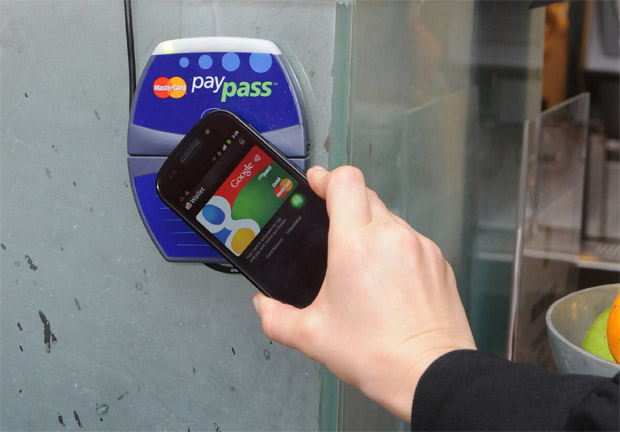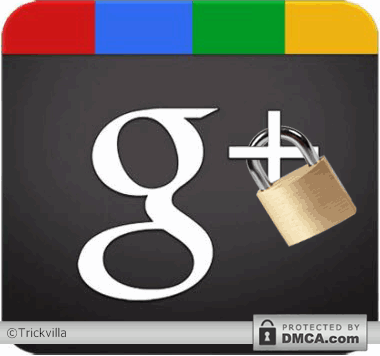How It Works:
Back in May, Google announced their mission to kill your wallet.
Tying into the near field communication (NFC) system built into select Android handsets, Google Wallet allows your phone to act as your credit card. By tapping your Android phone against a compatible card reader available in select retailers, your payment credentials are transferred to the merchant without any swiping or physical cards required.
While the idea of combining your phone and your credit cards may terrify some, Google Wallet is (at least in theory) more secure than their real world plastic counterparts. If your phone’s screen is off, the transmitter chip can
not be powered and stores no data (thereby preventing a passing hacker from skimming your card as he walks by). If you haven’t used Wallet in the past 30 minutes or so (or if you’ve manually locked it), a PIN is required before anyone can use your cards or even see which cards your Wallet contains.
My Experiences:
“What? Wait, do that again.”
“Is that legal?”
“Whoaaaaaaaaaaaaa.”
Every time I use Google Wallet, the person on the other side of the register looks at me like I’m Marty McFly and I’ve just stepped out of the DeLorean, hoverboard in hand. More than once, as I touched on above, they wondered aloud if I’d just pulled some techno voodoo on their system (though my favorite reaction of all was easily “Oh my god! iPhone 5!”)
When Wallet works (as it did for nearly all of the transactions I tried at compatible NFC readers), it works really, really well. It’s lightning fast, ultra-intuitive (turn on display, tap phone to reader. If you haven’t punched in your PIN recently, do so and tap the phone again. You don’t ever need to launch the app manually.) The merchant simply sees it run through their point of sales machine as any other card might, the receipt prints out, and you’re on your way.
When it doesn’t work, things get a bit… awkward. The one time the system failed, the merchant legitimately had no means of figuring out why. My phone’s screen read “Sent!”, their card reader made all of the appropriate bloops, and then.. nothing. I tried an NFC-enabled AmEx card I had handy, and it worked without a hitch. This was a location that I’d used Wallet at before. These same mystery issues can pop up with
any credit card payments system, of course — but with the newness of NFC and that air of caution that a few folks conveyed, you should probably be prepped to explain yourself.
Where It Works:
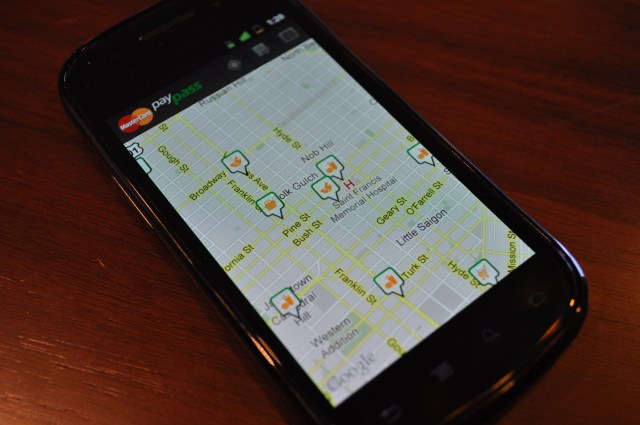
Google Wallet will not work everywhere your credit card will. It won’t work everywhere there’s an NFC-friendly card reader, either. Wallet requires an NFC reader based on a new-ish specification, and only a select bunch of retailers have gotten around to updating.
With that said: even out in the relatively low-tech East Bay of California, I had no trouble finding locations to at least test things out. Making that effort considerably easier was an included
MasterCard PayPass application, which can find and display all compatible retailers near your current location or any location you manually input. The list of compatible retailers within a 5-mile radius of my home was about a dozen items long, almost entirely made up of Jack In The Boxes, CVSes, and 7-11s.
Therein lays one of Google’s biggest challenges: getting these card readers
everywhere. The readers are by no means Google Wallet specific (as mentioned above, the reader just needs to be based on a relatively new spec, but is the same tap-to-pay reader already used by Visa/AmEx/Mastercard) and the card vendors themselves have long been making the push — but until these things are nearly ubiquitous, your wallet (or at least one physical credit card you keep at arm’s reach) isn’t going anywhere.
How You Pay:
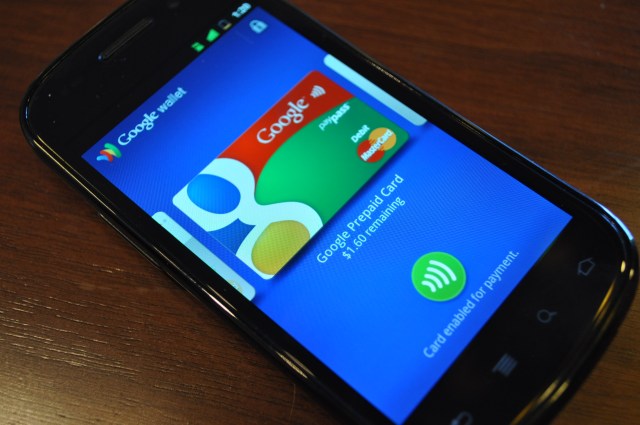
On Day 1, Wallet supports just one third-party card: the Citi Mastercard.
I don’t have one of those, and had a hard time finding anyone who does.
Fortunately, Google is well aware of this. For those of us with other banks and other cards, they’ve created the Google Pre-paid card. You add funds to the pre-paid card from any other credit card you’ve got, then tap into this pre-paid pool whenever you make a purchase. It’s not the most convenient extra step, but it at least opens up Wallet to just about anyone with a credit card. Google has just announced that they plan to support Visa, Discover, and AmEx cards in future releases — alas, no timeframe was given and it’s not clear whether or not support will be rolled out on a bank-by-bank basis.
The App
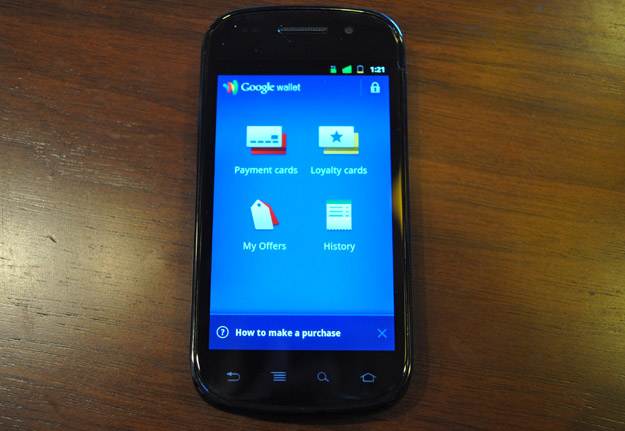
The Google Wallet app is executed with near perfection. It’s gorgeous, thoughtfully designed, and perfectly intuitive. The app is made up of four sections: Payment Cards, Loyalty Cards, My Offers, and History.
Payment Cards displays all of your Wallet-ified credit cards in a horizontally scrolling carousel. A small toggle below each card allows you to set anything in your e-plastic armory as the default. You can also add retailer-specific giftcards to your collection, though the only retailer supported at launch is American Eagle (Google promises more are on the way. I believe Subway is on board for the future.)
Loyalty Cards looks nearly identical to Payment Cards, but is meant for your myriad “Buy 10 sandwiches, get one free!”-type cards. As with giftcards, though, the only retailer at launch is American Eagle (but again, more are said to be on the way.)
My Offers lets you view any nearby promos you’ve purchased through Google’s daily/local deals app, Google Shopper.
The
History section is a bit bare bones on day 1. It can currently display only the timestamps of your recent transactions , leaving out any details regarding where it was used and even how much was spent. Google tells me this is something they plan to address quickly, but they just couldn’t get it done in time for launch.
Conclusion:
Google Wallet is great, magical, impressive, and all sorts of other positive adjectives. But today’s launch is just a small, but meaningful, first step. NFC-based payments via Mobile is something the world has long unanimously agreed would be awesome, but nearly all of the progress toward it (at least in the US) has been behind the scenes. This is the first time the public has really gotten to play with it — and while it’s going to take a few years (at the very least. Think about how many shops still insist on “Cash Only”.) before it’s ubiquitous enough to kill your wallet, Google seems in it for the long haul.
(… now, can anyone tell me what the heck I’m supposed to do when the battery dies and I’ve left my wallet at home?)
 Setting its sights beyond the west after a successful US launch and the recent unveiling of its Facebook Open Graph integration, subscription music service Spotify has hired former Google executive Dan Brody as General Manager Asia-Pacific.
Setting its sights beyond the west after a successful US launch and the recent unveiling of its Facebook Open Graph integration, subscription music service Spotify has hired former Google executive Dan Brody as General Manager Asia-Pacific.



![Happy Birthday Google: Celebrate With All the Anniversary Doodles
[PICS]](http://8.mshcdn.com/wp-content/uploads/2011/09/125,googledoodlesbirthdayanniversary.jpg)



![15 Fantastic iPhone Photos of Rainbows [PICS]](http://5.mshcdn.com/wp-content/uploads/2011/09/125,iphonephotosrainbows.jpg)




























